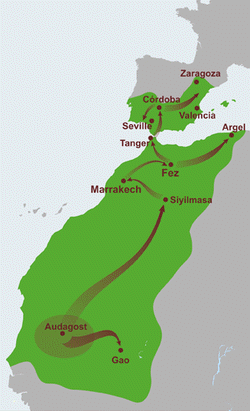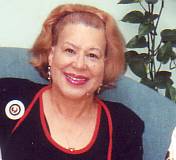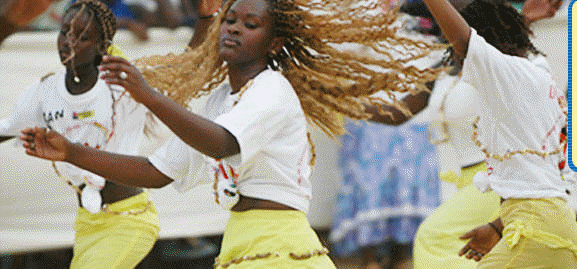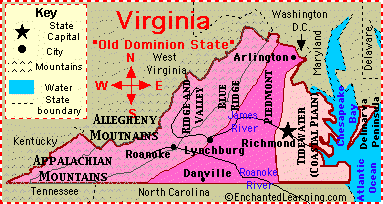 |
From Wikipedia, the free encyclopedia
(Redirected from Elizabeth Hemings)
| Elizabeth "Betty" Hemings | |
|---|---|
| Born | c.1735 perhaps Bermuda Hundred, Henrico County, Virginia |
| Died | 1807 (aged 7172) Monticello |
| Nationality | American |
| Occupation | Domestic servant |
| Children | Sally Hemings, John Hemings, Mary Hemings, James Hemings, Martin Hemings, Critta Hemings, Robert Hemings, Bett Hemings, Thenia Hemings, Nance Hemings, Peter Hemings, Lucy Hemings |
| Parents | Captain John Hemings and Susannah Epps |
| Relatives | Harriet Hemings, Madison Hemings, Eston Hemings, Frederick Madison Roberts, John Wayles Jefferson |
Elizabeth "Betty" Hemings (c.17351807) was a mulatto slave, who in 1761 became the concubine of the planter John Wayles of Virginia. He had become a widower for the third time. He had six children with her over a 12-year period. After Wayles died, the Hemings family and more than a hundred other slaves were inherited as part of his estate by his daughter Martha Jefferson and her husband Thomas Jefferson.
Eventually more than 75 of Betty's children, grandchildren, and great-grandchildren were born into slavery and worked on Jefferson's plantation of Monticello.[1] They were skilled chefs, butlers, seamstresses, weavers, carpenters, blacksmiths, gardeners, and musicians.[2] Jefferson gave others to his sister and daughters as wedding presents, and they lived at other Virginia plantations.
Betty's oldest daughter Mary Hemings became the common-law wife of wealthy merchant Thomas Bell, who purchased her and their two children in 1792 and informally freed them. Mary was the first of several Hemingses to gain freedom before the Civil War. Betty's daughter Sally Hemings is widely believed by historians to have had six children as the concubine of Thomas Jefferson in a relationship lasting nearly four decades. Jefferson freed all four of her surviving children when they came of age, two of them by his Will.
Contents
[hide]- 1 Biography
- 2 John Wayles
- 3 Descendants
- 4 Footnotes and citations
- 5 Further reading
- 6 External links
Biography[edit]
According to the oral history of her descendants, Betty was the mulatto daughter of Susannah Epps, a full-blood African woman enslaved in Virginia and Captain John Hemings, an English captain of a trading ship.[3] Madison Hemings in his memoir said the surname of the captain was Hemings; the family tradition was that he had tried to buy Betty when he discovered his daughter had been born.[4] The place of her birth is uncertain (Hemings said it was Williamsburg[4]), but by 1746 she was recorded as the property of Francis Eppes IV of the Bermuda Hundred plantation.[3]
Betty's grandson Madison Hemings related the family tradition that Betty was born into slavery as the property of "John Wales" (meaning he owned her mother. The family said Captain Hemings plotted to kidnap his daughter, but Wayles took measures against this.[4] Wayles may have sold Betty to Francis Eppes and later regained ownership of her when he married Eppes's daughter Martha as his first wife, or else her grandson Madison may have confused some of the chronology.
After John Wayles married Martha Eppes, the daughter of Francis Eppes IV, in 1746, her father gave the couple Betty and her mother as part of his daughter's wedding settlement, with the stipulation that she would always belong to Martha and her heirs. Betty was trained as a domestic servant at one of Wayles's plantations.
In the 1750s, Betty Hemings gave birth to the first four of her twelve children, whose father was a slave. The children were:
- Mary (1753-after 1834), recognized as a seamstress;[3] she was hired out to Thomas Bell and later purchased by him in 1792; they had a common-law marriage and two children together. He informally freed her and their two children, and willed them his estate in Charlottesville. Jefferson kept her older children at Monticello as slaves (see her page);
- Martin Hemings, who became the butler at Monticello;[3]
- Bett or Betsey, called Betty Brown (1759-after 1831). Already serving as the personal servant of Martha Wayles Skelton, Betty accompanied her to Monticello after Skelton's marriage to Thomas Jefferson. She was among the domestic slaves taken by the Jeffersons to Williamsburg and Richmond when the planter served as governor. During the British invasion of Richmond in 1781, Betty and her sister Mary Hemings were taken as prisoners of war.[3] Betty's two sons were Wormley Hughes (17811858) and Burwell Colbert (1783-c. 1862), who both served Jefferson as adults. Colbert served for decades as the butler and personal valet to Jefferson, who freed him by his will of 1826.[5][6])
- Nance Hemings (1761 - after 1827), in 1785 Jefferson gave her to his sister as a wedding gift.[7] Ten years later he bought her back, as she was a skilled weaver and he had started a cotton factory at Monticello.[8][9]
Betty's master John Wayles was widowed three times. In 1761, after the death of his third wife, Wayles took Betty Hemings as his concubine. According to her descendants and other sources, she had six children with Wayles.[10] They were half-siblings to his eldest daughter Martha Wayles, who married Thomas Jefferson. As the historians Philip D. Morgan and Joshua D. Rothman have written, there were numerous such interracial relationships in the Wayles-Hemings-Jefferson families, Albemarle County and Virginia, often with multiple generations repeating the pattern.[11][12] Her children by Wayles were:
- Robert Hemings (17621819), who purchased his freedom from Thomas Jefferson in 1794;
- James Hemings (17651801), freed by Jefferson in 1796 after training his brother Peter for three years to replace him as a chef;
- Thenia Hemings (17671795);
- Critta Hemings Bowles (17691850), who married Zachariah Bowles, a free man of color. In 1827, following Jefferson's death, most of his slaves were sold. Critta was purchased and freed by Francis W. Eppes, whom she had cared for as a nurse when he was young, starting in 1802. (His mother was Mary Jefferson Eppes, Jefferson's second daughter).[13]
- Peter Hemings (1770-after 1834), served as chef to Jefferson after being trained by his brother James; and
- Sally Hemings (c. 1773-1835), believed to be concubine to Jefferson from about 1789. She had six children by him, four of whom survived and whom he freed.[14] Sally was with him to his death in 1826, after which she was "given her time" (informal freedom) by his surviving daughter Martha Randolph.
After Wayles died in 1773, all eleven members of the Hemings family and 124 other slaves were inherited by his daughter Martha Wayles and her husband Thomas Jefferson.[7] The Jeffersons had the Hemings children trained as skilled artisans and domestic servants, giving them privileged positions at the plantation. No member of the Hemings family worked in the fields.
While resident at Monticello, Betty Hemings had two more children:
- John Hemings (17761833), whose father was an Irish workman Joseph Neilson; John was freed in Jefferson's will after decades of service as a skilled ironworker; and
- Lucy Hemings (17771786), whose father was believed to be a slave.
In the last decade of her life, Betty Hemings had her own cabin at Monticello, from 1795 to 1807. She raised produce and sold it to the Jefferson household: items such as cabbages, strawberries, and chickens. Her former cabin site is being investigated as an archeological site. It is expected to yield new information about the daily lives of the enslaved African Americans at Monticello.[15]
John Wayles[edit]
Historians have tended to accept the account that Betty Hemings and John Wayles had children together. Her last six children were multiracial, with majority white ancestry. As is the case of many relationships between slaveholders and slaves, documentary evidence is slight. Betty was mentioned in John Wayles' will, which some take as an indication of a relationship. However, the marriage contract between John Wayles and Martha Eppes stipulated that Betty, her mother, and their descendants, should go to Martha Wayles and her heirs forever. According to contemporary accounts, some of Betty's children (including Sally) were nearly white in appearance. Other support is found in private letters from the first decade of the 19th century, which later became public.
The slave community at Monticello was well aware of the relationship. In 1873 Betty's grandson Madison Hemings and Israel Jefferson, both former slaves at Monticello, published newspaper interviews which said Wayles was the father of Sally Hemings and several other of Betty's children.[16][17]
Descendants[edit]
Betty Hemings has numerous descendants. Some of note are:
- From the family line of daughter Sally Hemings
- Madison Hemings - 2xgreat-grandson Frederick Madison Roberts, state politician in California; Eston Hemings Jefferson - great-grandson John Wayles Jefferson, colonel in Civil War and wealthy cotton broker; 2xgreat-grandson Walter Beverly Pearson, industrialist; John Weeks Jefferson, descendant whose DNA matched that of the Jefferson male line in 1998 test.
- From the family line of daughter Mary Hemings
- James Monroe Trotter
- William Monroe Trotter
Fountain Hughes was a descendant of Wormley Hughes, one of Betty's grandsons who worked for Jefferson at Monticello.[18] At the age of 101, when living in Baltimore, Maryland in 1949, Fountain Hughes gave what is the last surviving recorded interview of a former slave. It is available online through the World Digital Library and the American Folklife Center of the Library of Congress.[19]
Footnotes and citations[edit]
- Jump up ^ John Wayles Paternity
- Jump up ^ Betty Hemings - Monticello Explorer
- ^ Jump up to: a b c d e Lucia C. Stanton, Free Some Day: The African American Families of Monticello, University of North Carolina Press, 2000, pp. 103-104, accessed 13 August 2011
- ^ Jump up to: a b c "1873: Madison Hemings' Memoir", Jefferson's Blood: Chronology, February 2000
- Jump up ^ "The Descendants of Elizabeth Hemings: Betty Brown", Plantation and Slavery, Monticello, accessed 20 March 2011
- Jump up ^ Annette Gordon-Reed, Thomas Jefferson and Sally Hemings: An American Controversy, University of Virginia, 1998 edition with preface on DNA data, pp. 91-92. Note: Thomas Jefferson Randolph, the president's oldest grandson, told the biographer Henry Randall that Betsey, like her younger half-sister Sally Hemings, had children who resembled Jefferson. He said that Samuel Carr was the father. The historian Annette Gordon-Reed thought Randolph's assertion might be part of the family's attempt to deflect paternity questions from Jefferson, as there is no corroborating statement or evidence. Carr was disproved as the father of Sally's children by Y-DNA testing of male-line descendants.
- ^ Jump up to: a b Bear, James A, The Hemings Family of Monticello, Ivy Press, Virginia, 1980, pp. 3-6
- Jump up ^ [ "Nance Hemings"], Plantation and Slavery, Monticello
- Jump up ^ Lucia Stanton, Free Some Day: The African-American Families at Monticello, Thomas Jefferson Foundation, 2003
- Jump up ^ "John Wayles", Jefferson's Community: Relatives, Monticello. Footnote to Wayles' paternity: Isaac Jefferson, Memoirs, 4; Madison Hemings, "Life Among the Lowly," Pike County Republican, March 13, 1873. A December 20, 1802 letter from Thomas Gibbons, a Federalist planter of Georgia, to Jonathan Dayton states that Sally Hemings "is half sister to his first wife." Similarly, a letter from Thomas Turner in the May 31, 1805 Boston Repertory states, "an opinion has existed . . . that this very Sally is the natural daughter of Mr. Wales, who was the father of the actual Mrs. Jefferson."
- Jump up ^ Philip D. Morgan (1999). "Interracial Sex In the Chesapeake and the British Atlantic World c.1700-1820". In Jan Lewis, Peter S. Onuf. Sally Hemings & Thomas Jefferson: history, memory, and civic culture. University of Virginia Press. ISBN 978-0-8139-1919-5.
- Jump up ^ Joshua D. Rothman, Notorious in the Neighborhood: Sex and Interracial Relationships Across the Color Line in Virginia, 1787-1861, University of North Carolina Press, 2003
- Jump up ^ "Critta Hemings Bowles", Plantation and Slavery, Monticello, accessed 21 March 2011
- Jump up ^ Jefferson's Blood, PBS Frontline, 2000, accessed 10 March 2012
- Jump up ^ Saraceni, Jessica E. "The Matriarch of Mulberry Row", Archeology Magazine, 1997
- Jump up ^ Footnotes section, John Wayles article at the Monticello Wiki
- Jump up ^ Gordon-Reed, Annette. Thomas Jefferson and Sally Hemings: An American Controversy. University of Virginia Press (April 1997), pp. 128-130. ISBN 0-8139-1698-4
- Jump up ^ "Hughes (Hemings)", Getting Word, Monticello Foundation, accessed 26 May 2013
- Jump up ^ "Interview with Fountain Hughes, Baltimore, Maryland, June 11, 1949", American Folklife Center, Library of Congress, World Digital Library, accessed 26 May 2013
Further reading[edit]
- Lucia Stanton, Preface by David Brion Davis, Free Some Day: The African-American Families of Monticello, Monticello Monograph Series, Charlottesville, VA: Thomas Jefferson Foundation, 2000
External links[edit]
- Monticello Explorer: Elizabeth Hemings
- Franηois Furstenberg, "Jefferson's Other Family: His concubine was also his wife's half-sister", review of Annette Gordon-Reed, The Hemingses of Monticello, Slate, 23 September 2008
- Digital Archeological Archive of Comparative Slavery
- Roll of the slaves of John Wayles which were allotted to T. J. in right of his wife on a division or the estate, Farm Book, 17741824, page 11, by Thomas Jefferson [electronic edition]. Thomas Jefferson Papers: An Electronic Archive. Boston, Mass.: Massachusetts Historical Society, 2003
- Eppington Plantation Heritage Site
Categories:
- 1730s births
- 1807 deaths
- American slaves
- People from Albemarle County, Virginia
- Hemings family












